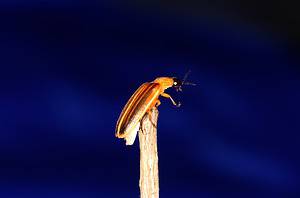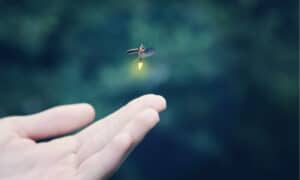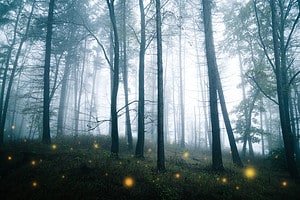Lightning bugs, or fireflies, are one of several species of bioluminescent bugs, that is, insects that are able to produce light from their bodies. Lightning bugs are a favorite insect for children and adults alike. They’re easy to catch, gentle, and don’t bite or sting. On a warm summer evening, they can make a backyard or field look like stars have come down to play. They all disappear for the winter, but somehow, when the weather warms up, there they are again. Where do they spend the winter? And if you love lightning bugs, how can you attract more to your yard? These are just a couple of the questions we’ll explore in this article.
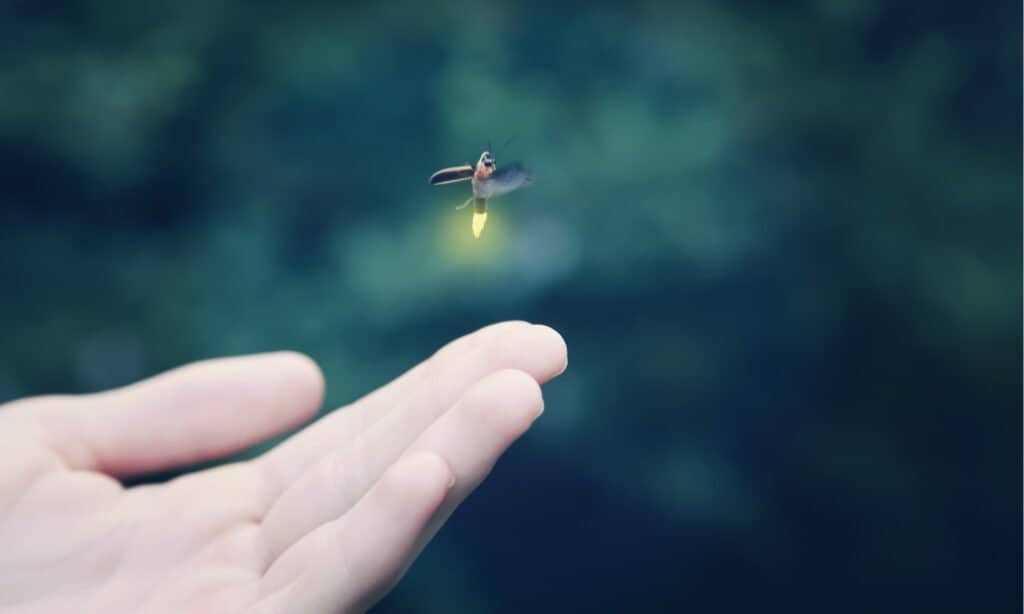
Fireflies are gentle, easy-to-catch, magical-looking little creatures. For many people, chasing and catching them is a treasured childhood memory.
©Suzanne Tucker/Shutterstock.com
Where and When to See Fireflies
Lightning bugs are also known as fireflies. They are part of a group of over 2,000 species of glowing bugs, found in North America, Europe, and Asia. The largest of them can get up to about an inch long. They like areas with a lot of trees, dense vegetation, and tall grass as well as damp areas around ponds, streams, and bogs. In the United States, they are found mainly in the Eastern half of the country where the climate is moister. They don’t thrive as well in arid parts of the West. Fireflies are nocturnal and avoid areas with a lot of artificial lighting. They’re often seen at dusk, slowly flying around and blinking an otherworldly light from their glowing tails. They communicate with each other using these bioluminescent lights, so too much artificial light interferes with their conversations.
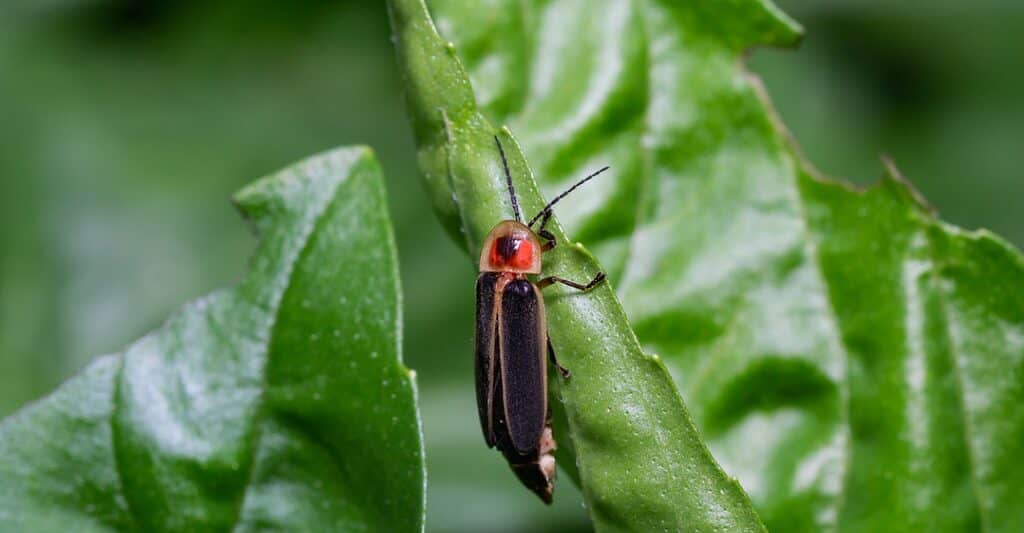
Lightning bugs like areas with a lot of vegetation and not too much artificial light.
©iStock.com/ErikAgar
How and Why Do They Light Up?
“Bioluminescence” is the term for the chemical process a firefly uses to create its light. The female has a special organ that creates an enzyme called luciferase. This interacts with oxygen and other elements to create light in shades of green, yellow, red, or blue. Luciferase has been a valuable substance for medical and forensic research.
So why do they light up? It’s a form of communication. They can glow steadily or flash their light in patterns, and they can coordinate their lights with others. Sometimes a large group may synchronize their lights all at once. They can warn one another of predators, attract a mate, or in some cases, a predatory female may lure in a male in order to hunt and eat him. The lights also signal many predators that they are not good to eat. They have the same kinds of toxins in them as poisonous toads.
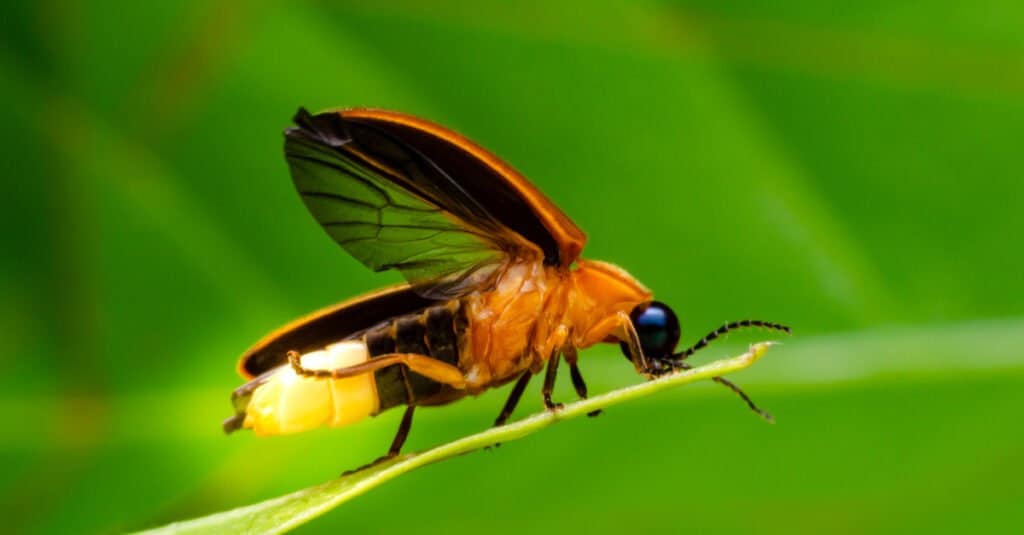
The firefly’s light is in the last segments of its body. At night they are as bright as children’s glowsticks.
©khlungcenter/Shutterstock.com
The Lightning Bug Life Cycle
All spring and summer lightning bugs fly around eating, but what they eat depends on the species. Some eat nectar and pollen. Others are carnivorous, feasting on snails, slugs, worms, and other insects – including other fireflies. They use their lights to find a mate, then the female lays eggs on the ground or on plants that take three to four weeks to hatch. After they hatch, the larvae already have the ability to glow, which, along with their bad taste, helps predators avoid them. They become full adults in a couple of weeks, and then have a few weeks more to mate, lay eggs, and die. When you think about it, this very short lifespan makes the sight of fireflies going about their business on a summer evening a reminder that summer itself will not last much longer, so we enjoy it while we have it.
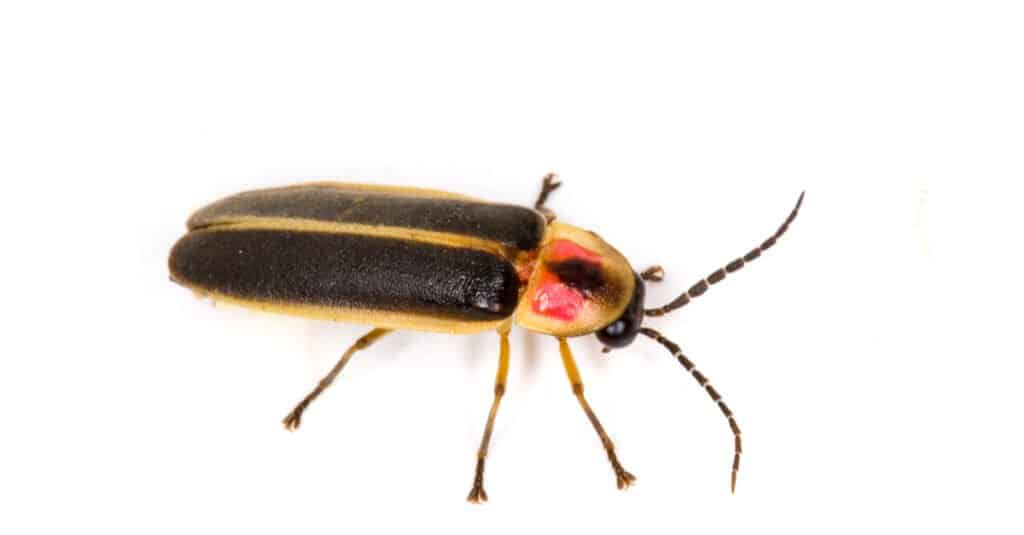
The life cycle of an adult lightning bug lasts only a few weeks.
©Elliotte Rusty Harold/Shutterstock.com
Where Do Lightning Bugs Go in Winter?
In winter, fireflies that live in the tropics of Central America are living their best life. The constant warm weather lets them be active all year. Where do lightning bugs go in winter in cooler climates? The adults die but their larvae are living underground or under the bark of a tree, waiting for warmer weather to come out of their hibernation. There is a variety known as the “winter dark” or “diurnal” firefly that comes out in February and starts the life cycle earlier. These use tree sap as a food source in those cold months.

In tropical climates like this, fireflies can be active all year long.
©RPBaiao/Shutterstock.com
More Fireflies! We Need More Fireflies!
In some areas lightning bugs are in decline due to the usual culprits: loss of habitat, pollution, pesticides, climate change, etc. But in their case, light pollution is another significant factor driving them away from people’s houses. So, what can you do if you want to attract more of them to your yard?
- Plant native pine trees. They’re ideal for the whole lightning bug life cycle.
- Plant shrubbery and tall ornamental grasses where they can hide during the day.
- Give them water. They like rivers and marshes. If you put in a koi pond, fountain, or just a regular simple birdbath, they’ll like that.
- Limit outdoor lighting. Even though you might want more light near your house for security, maybe you don’t need landscape lighting at the back or edges of your property.
As you’re considering how to reconfigure your yard, put some thought as well into what else might be attracted to your yard. For example, tall grass and bushes are a great hiding place not just for fireflies, but for snakes. Depending on where you live, you might want more lighting to keep away coyotes and bobcats, especially if you have a dog you might need to let out into the yard at night. Even if attracting fireflies to your house proves not to be a good option, consider taking a drive in the country at dusk and see if you spot any around the fields and edges of the forest. Either way, you’re making some beautiful memories.
The photo featured at the top of this post is © Fer Gregory/Shutterstock.com
Thank you for reading! Have some feedback for us? Contact the AZ Animals editorial team.



